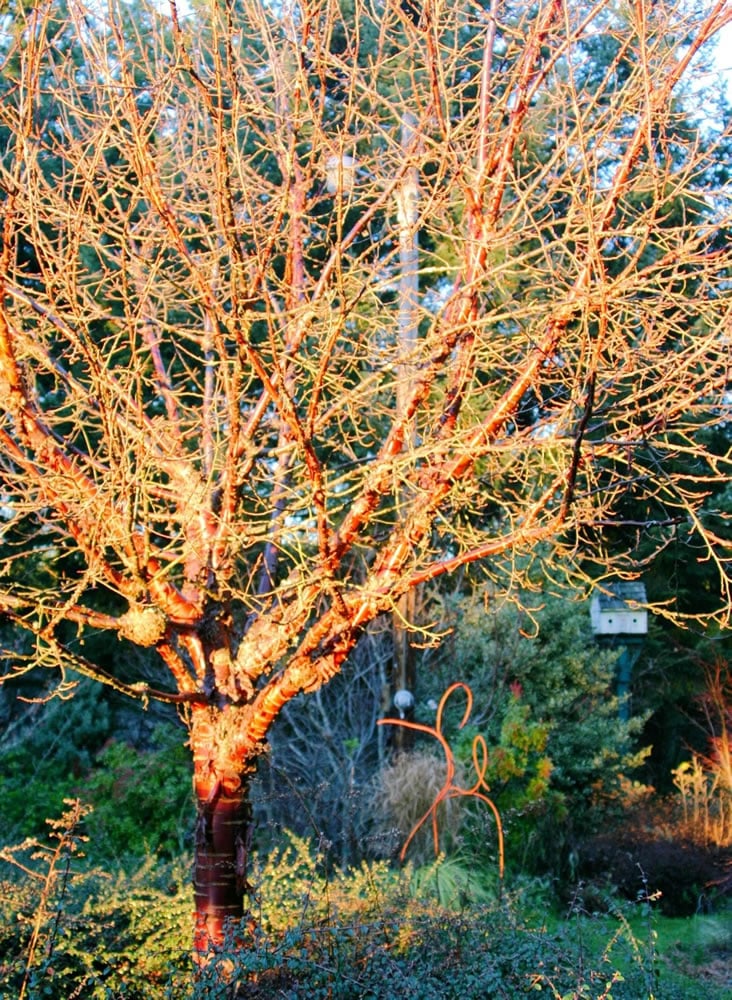It’s January and the beginning of the New Year, but the weather has me thinking that I might have to pull the Toro back out of storage and mow my lawn. While I’m out working in the yard, I might also cut a bouquet of roses for the dining room table.
It’s rare to begin the month of January with such warm temperatures and mild conditions but I, for one, welcome this fleeting distraction from winter.
In early December, we experienced a couple of weeks of very chilly weather, with bouts of frost in the evening that lasted through the early morning hours. We were more often dry than wet. I still hesitate to say we have entered a state of complete dormancy because it is typical in the Pacific Northwest to go in and out of severe weather conditions over the winter.
Dormancy in our part of the world is fickle, coming and going with the rise and fall of our temperate climate. We share this phenomenon with Britain and much of western Europe, parts of the northeastern United States, New Zealand, eastern Asia and southern Chile. The hallmark of temperate zones is a relatively small fluctuation in temperature between seasons, with rain that generally falls all year-round.
Some of these areas experience quite different types of weather, depending on their position relative to the sea and winds. For example, although the northeast region of North America is at the same latitude as western and northern Europe, it lacks the warming influence of the North Atlantic Drift current. As a consequence, much of the northeastern seaboard of the U.S. is ice-bound during winter months.
These winter days are still shorter, but that is changing daily now that we have passed the winter solstice.
It’s especially difficult to be motivated to work outside when the days are colder and wetter than we might like. On those days, I have to force myself to get out in it and, once outside, to sustain the effort to get any garden work done. Once I get started, I can always find something to do in the garden.
Great time to mulch
One of the reasons we lose plants in winter is that they come out of dormancy too early and are subsequently killed by a late-season frost. During a cold spell in December, I encouraged fellow gardeners to add a protective mulch to flower beds and borders for this reason. The best way to insulate plant roots from frost is to cover the soil with an overcoat of compost or other mulch material.
Even so-called “hardy” plants, such as hardy fuchsias and roses, may benefit from an extra layer of protection over the crown. In addition, the mulch you add now will help prevent the onslaught of tenacious annual and perennial weeds. This is, by the way, the easiest time of year to apply a layer of mulch.
I’m convinced that the main reason people do not mulch their gardens is because they attempt to do so when the garden is filled with plants. It is more difficult to tackle this job in spring and summer. In winter, much of the plant material has died down to the ground or been cut back. When borders are clear of plants, it’s easier to spread on a layer of mulch.
The best mulch you can use is homemade compost. It’s inexpensive because it’s created from plant material collected over the past year from your own garden. Since you collected it yourself, you can be assured that the compost is clear and free of disease. Spread the compost two to four inches thick. At this time of year, it’s not necessary to dig it in to the ground. Once it’s in place, worms will get to work recycling the organic matter, pulling it down to improve your soil.
There will be winter days when the weather frustrates even the most stalwart gardener.
On days that you simply cannot face the elements, why not spend the time inside looking through all those garden catalogs you have accumulated over the last few months? Give yourself a couple of uninterrupted hours and take a journey into the world of garden possibilities. Once you weed through the abundance and choose between the superlatives, take the time to order and have your plants delivered to you about the same time planting season arrives.
Robb Rosser is a WSU-certified master gardener. Reach him at Write2Robb@aol.com.



